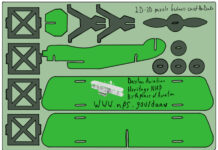Every enterprise starts with a seed of an idea that is nurtured by the people who see value in that idea and who invest time, money, knowledge and expertise to help it grow. There are also those who supply the resources, materials, network and facilities to realize an idea and bring it to market. An organization with a holistic perspective considers the complexity of the systems and operations involved in delivering products to communities of consumers. An understanding of how a business interacts with communities and ecologies can be communicated at numerous levels and experiences. It can then be applied to new enterprises, particularly when an organization has integrated a triple bottom line approach (people, planet, profit) into its operations. We believe that the ecology of a tree is a useful metaphor for understanding how to grow a sustainable enterprise.
The Business Ecology Model identifies and visually represents how value is determined in an organization. The components of the Business Ecology Model outline how an organization establishes, cultivates and grows its business throughout the product life cycle. Recommendations for how design management can enable the successful development and launch of products are identified in four categories: managing, generating, capturing and measuring value, as detailed on the following pages.
…
Viewing an organization through the lens of the Business Ecology Model encourages the visualization of the product development process as a non-linear system. Distinct from a tree in nature, business leaders and designers have the ability to modify their tree’s DNA throughout its life cycle. They can adjust the process by which products are designed and developed and even vary their product, or fruit, offering. Organizations are often strong in one area and not in others, which creates barriers to achieving their goals. It is important to retain a balance, as demonstrated in a Business Ecology Model, and to remain aligned with the organization’s values, vision and mission in order to recognize when it is time for some ‘pruning’. When design and business assets are integrated with fluidity into the strategy, process and practice of an organization, there exists vast potential for social entrepreneurs to produce both innovative market-based and non-profit solutions that meet the complex challenges of our world, while bringing prosperity to those they serve.
Analysis
This article was interesting to because it outlined the important elements of a business model clearly and in a very easy-to-understand way. Breaking it down into “seeds, roots, branches, etc.. , makes developing a business model plan a lot easier. Establishing clear boundaries and goals for a business is essential and this model also considers sustainable ventures.
Take-Aways
Business models offer organization and help develop a project or business




